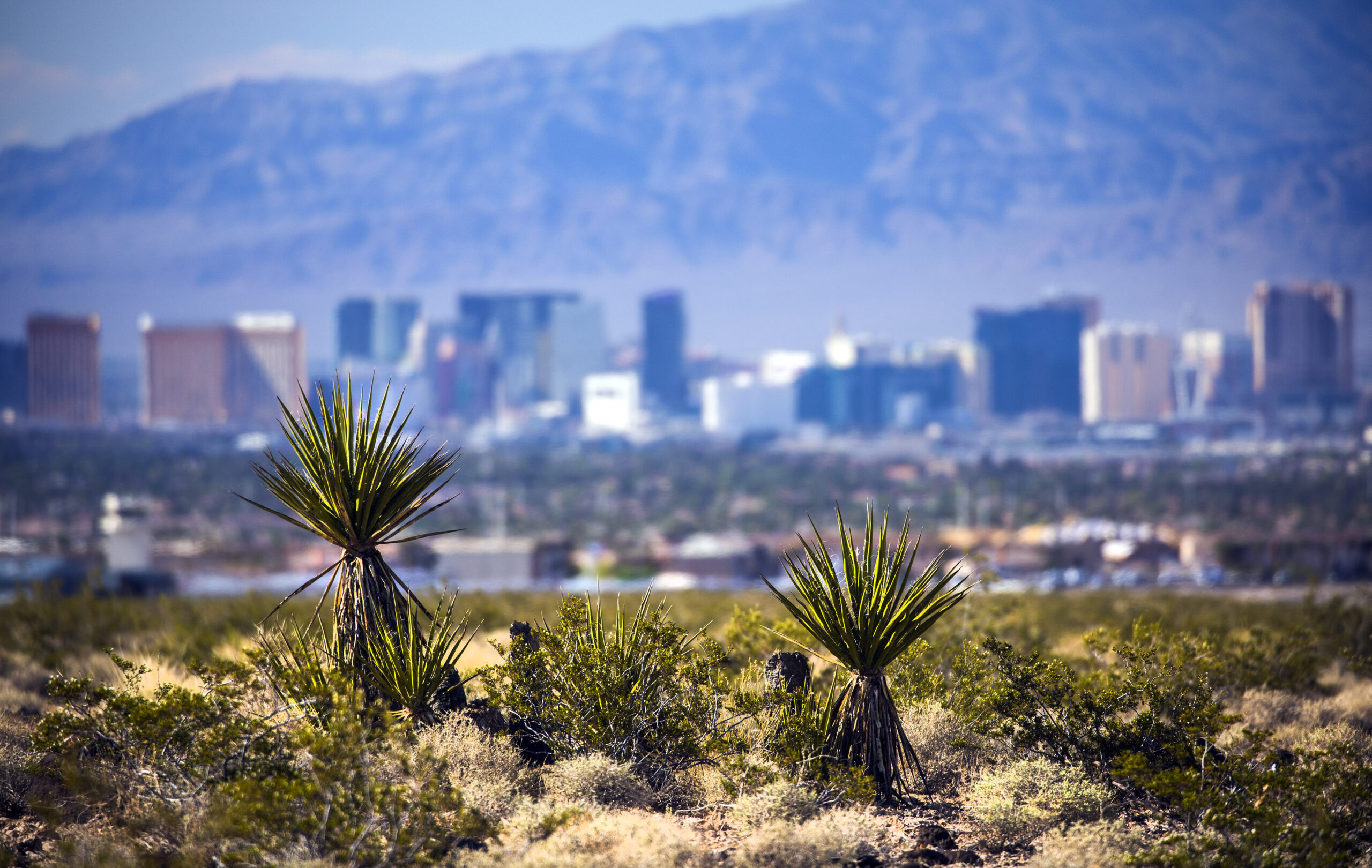Growth at any cost?

by Patrick Donnelly
Clark County is charting a dangerous new course of urban sprawl that threatens to worsen Southern Nevadans’ quality of life and imperil the Mojave Desert’s most iconic wildlife.
As has been exclusively reported by Daniel Rothberg in The Nevada Independent, county officials are working on federal legislation to expand the growth boundary around the Las Vegas Valley, allowing sprawl to spill over into adjacent and currently undeveloped valleys. They are crafting a proposal which they hope Nevada’s congressional delegation will one day take up on their behalf.
The proposal would allow almost 40,000 acres of public land to be sold to the highest bidder, eliminating public access for wildlife watching, hunting, hiking and off-roading. It also would gut Endangered Species Act protections for the Mojave Desert tortoise, setting a dangerous precedent where politicians, not scientists, determine the fate of this imperiled reptile.
Part of what makes living in Southern Nevada great is that we are surrounded by some of the most fantastic desert landscapes in the southwest. From Red Rock Canyon and Sloan Canyon National Conservation Areas to Desert National Wildlife Refuge, public lands are part of our heritage.
Sprawl jeopardizes that quality of life. It destroys public lands, it worsens air quality and it eats up habitat that wildlife, like the desert tortoise, needs to survive.
The Southern Nevada Public Lands Management Act of 1998 (SNPLMA) was a quiet revolution in public lands legislation. Sen. Richard Bryan’s bill drew a boundary around the Las Vegas Valley — a limit to southern Nevada’s sprawl.
As Bryan was shepherding SNPLMA through Congress, the county was grappling with the 1990 listing of the desert tortoise, Nevada’s state reptile, as “threatened” under the Endangered Species Act. Through that process, county officials authored the Clark County Multi-Species Habitat Conservation Plan (MSHCP), a sprawling document authored by an interdisciplinary team of scientists, subject to public review and scrutiny, and peer-reviewed by experts on the desert tortoise and other relevant species.
The habitat conservation plan specifies the guidelines Clark County must follow before approving development in tortoise habitat. It requires “mitigation” — conservation measures to ensure that the development does not drive the desert tortoise to extinction.
The Mojave Desert tortoise is a critically imperiled creature. Its populations have dramatically fallen across its range in California, Nevada and Utah. As climate change progresses, models show that species are moving “poleward”— that is, away from the areas toward the equator becoming hottest. As a result, some of the most robust existing populations of desert tortoise are on the north side of its range in Nevada, along the I-15 corridor and up to the Coyote Springs Valley and Mormon Mesa areas. The last redoubt of the desert tortoise will be in Southern Nevada.
Today, the county wants to grow. This is as sure as a politician wants campaign donations from developers, as sure a desert tortoise feasts on wildflowers during the all-too-short bloom in the spring. But what sort of growth? And how will this growth be managed to ensure that the desert tortoise’s habitat isn’t swallowed up by subdivisions and golf courses?
This is the purpose of a habitat conservation plan. As the law stands, the county must renew its MSHCP if it desires further growth, amending the terms under which it can grow and, importantly, the mitigation required for protecting the desert tortoise and other species. But county officials are proposing to amend the MSHCP legislatively, dictating the terms of their own growth. This is letting the fox mind the henhouse, with potentially disastrous consequences for the desert tortoise.
What little conservation Clark County is proposing in their legislation is weak and does not provide meaningful protection for the tortoise. Since there are only small scraps of unprotected potential wilderness left in the county, they propose to designate Areas of Critical Environmental Concern. This is a toothless designation that would do nothing to help the tortoise.
We have to ask ourselves why the county would be pursuing a federal law that recklessly disregards science and conservation. Because of the opaque manner in which the county staff has conducted itself, we are left with only rumors.
Clark County Commissioner Marilyn Kirkpatrick has reportedly been a driving force behind the proposal. Apparently Utah Rep. Rob Bishop, the notoriously anti-conservation House Natural Resources Committee chairman, has been involved. Nevada Sen. Dean Heller has quietly been flagged as a potential sponsor. And sitting at the negotiating table are many of our erstwhile conservation allies, potentially bargaining away the future of the desert tortoise in exchange for a few acres of wilderness. My organization, the Center for Biological Diversity, has filed public records requests with the county to uncover what forces may be influencing them to go with such gusto for development at any cost.
The county will hold a hearing on the proposed bill at 4 p.m. Tuesday, June 5th at the Clark County Library, 1401 E. Flamingo Road. I encourage residents who are concerned with uncontrolled sprawl and want to save the desert tortoise to show up and speak out against this reckless plan. Our quality of life in Southern Nevada and the fate of our beloved state reptile hang in the balance.
Disclosure: Patrick Donnelly has donated to The Nevada Independent. You can see a full list of donors here.
Patrick Donnelly is Nevada state director at the Center for Biological Diversity, a nationwide environmental nonprofit.
This article was updated at 9:04 a.m. on June 4:
The 1994 listing of the desert tortoise was changed to the "1990 listing" and mentions of Sen. Harry Reid were changed to Sen. Richard Bryan. Reid opposed the bill.
This article was updated at 4:30 on June 5: The Southern Nevada Public Lands Management Act of 1998 designated a growth boundary around the Las Vegas Valley. Clark County land disposal and wilderness were addressed in the Clark County Conservation of Public Land and Natural Resources Act of 2002.
